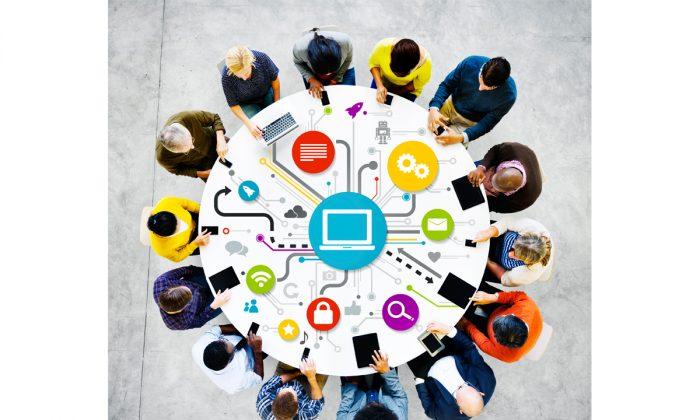Social media platforms along with mobile devices changed how we communicate and do business nowadays. The challenge moving forward is to understand these digital savvy consumers and learn how to engage them on the various platforms. As a business, as a brand, as an enterprise, or any other your job besides building a visible brand is to create a meaningful relationship through some sort of a reward system.
Sometimes for success to come knocking at your door you need a clear mission for how you will carry out concrete business goals. That happens to include putting into place a reward program for using your product, service, and brand. Why? Without a connection or some sort of a visible idea that resonates with customers you are doomed as a business. The concept that comes to mind automatically is using gamification.
According to Wikipedia, Gamification is the use of game thinking and game mechanics for non-game context to engage users to solve problem and increase users’ contributions. This incentive strategy has been tested in other areas like teaching, entertainment, recruitment, employee evaluation, etc.
This use of motivation is not just utilized for attracting a target audience or customers only. This motivational tool is also applies to improving the performance and working conditions of staff within an entity.
Gartner defines and identifies the key elements of ´gamification´ as follows: game mechanics, experience design, digitally engage, motivate and achieving goals. In other words, these aspects are meant to motivate people to stimulate a behavioral change, develop a skill and then drive innovation.
The usage of this innovative and motivational tactic proves the difference between succeeding and failing to reach certain goals. What it boils down to is not transforming your entire company philosophy, but integrating gamification in a way that rings true within your organization.
How retailers and brands leverage gamification
If you are a brick and mortar retail chain or a brand looking to accomplish great feats plenty of work must be done. The way retailers succeed with clients is a good customer service philosophy and an effective loyalty program for retail customers. This technique is not new, but in the digital age gathering data about customers is vital to developing more intelligence and accomplishing conversions in the future.
Why loyalty programs in retail? It allows the business retailer to change up the notion of purchasing something and instead driving up engagement between all the parties involved in this purchasing process. An example of driving interest in a brand gaming retailer, GameStop, introduced an innovative desktop “Monster Hunt” promotion in partnership with Google Maps and Warner Brothers Interactive, reports Retail Dive.com.
So the perk GameStop was proving was players can register at GameStop.com to hunt monsters for a chance to win 100 $50 gift cards. Elsewhere, when it comes to mobile apps this is another important space to reach customers. Gamification has proven huge in mobile because when you introduce offers in-app games like Pink-O did it drove up customer engagement by having exclusive prizes and incentives in the mix.
Ultimately, if you already have a mobile application you want more than just plenty of downloads. You want your audience to spend long periods of time on it in order for you to gather information on their behavior within this space.
In a Convince and Convert analysis brands at times are moving beyond the traditional campaign model structure. In addition, the combination of gamification and people as influencers for brands they are loyal to can prove to be a winning recipe. A case study of Delta Airlines using gamification through a local contest proved to be useful technique to target the audience. In a nutshell, what this gamification gimmick wants to achieve is make an emotional connection with customers and lead to longer relationships.
There is plenty of catching up to do, yet those who can stay on top of these trends can really develop great branding and exposure by using these fundamental gamification practices.
Facts and emerging trends of gamification
Gamification is used in many different industries. It is not limited to companies or businesses since it can be used as an engagement strategy for anything. So where is Gamification used? According to an infographic published on Visual.ly this is used in technology, work, communities, education, environment, enterprise, news, marketing, government and more.
Furthermore, the key drivers of gamification were explained by pioneer and keynote speaker Yu-Kai Chou:
- “Empowerment of creativity and feedback”
- “Development and accomplishment”
- “Epic meaning and calling”
- “Ownership and possession”
- “Social influence and relatedness”
- “Loss and avoidance”
- “Scarcity and curiosity”
In separate study conducted by Gigya they were able to show that gamification improves engagement by one-third, for online commenting (13 percent), sharing on social media (22 percent), and content discovery (68 percent).
The market for gamification will grow to 1.6 billion by the end of 2015.
In the enterprise sector changes are happening due to the overwhelming influence of social networking, consumer technology and games.
A SearchConsumeration post explains in information technology (IT) enterprises employees are embracing these new marketplace technologies. What leaders and management need to recognize is it can be used to motivate people within their enterprises.
What the above guide emphasizes productivity grows if gamification is embraced and adopted. What is essential if you’re considering gamification is to choose a platform that can integrate to the company´s vision and infrastructure.
The right platform for this needs four qualifiers: supports sales, customer service, social collaboration, elearning and more. For example, Gamification platform GamEffective, uses a unique approach in using a rich game narrative combining things from sports to car racing and more.
Takeaways and conclusions
As a result, gamification is a great way to improve the overall performance of organizations to become more cohesive and productive. It is a practice that has been around and continues to be used a motivational element to attract engagement.
An Indira Institute of Management paper mentions that the ´gamification industry´ was created in 2007 by Bunchball.
In conclusion, gamification will aid in converting negativity and positivity. As a strategic organizational tool it will be a powerful as a feedback and driver for greater improvement for organizations.
Finally, Gartner predicts that by 2015 more than 50 percent of organizations that manage innovation processes will using gamification in their efforts.





Friends Read Free